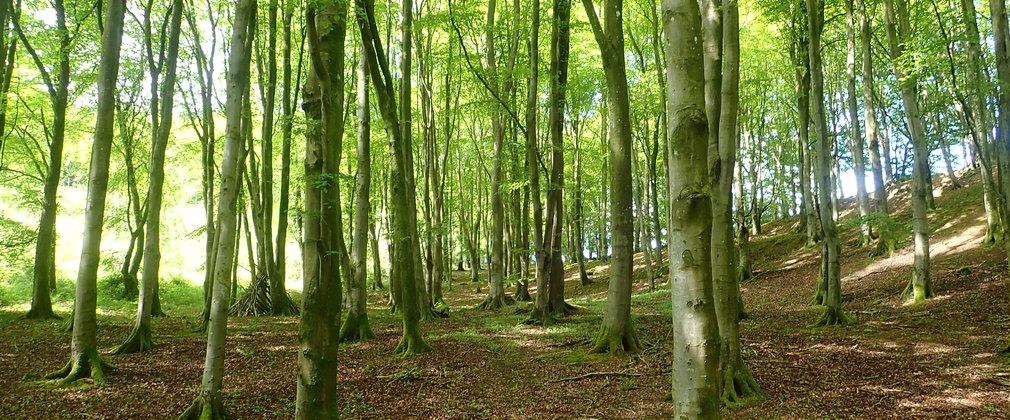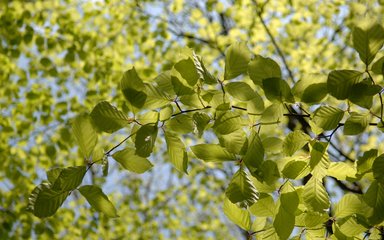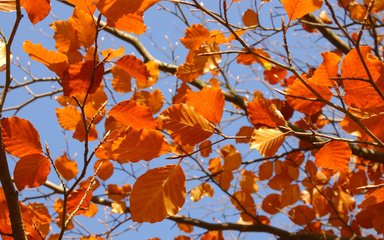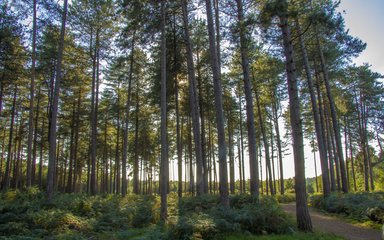
Sometimes called 'the Lady of the Woods', this beautiful tree arrived during the Bronze Age and is seen at its best in the beech woods of southern England. It is a shade tolerant species and can withstand wind exposure and cold temperatures. Find out more about this tree species, from its appearance to the uses of its timber.
Beech facts and figures
- beech (Fagus sylvatica) is commonly found on chalk downlands but grows well on light soil elsewhere.
- in autumn, beech leaves turn yellow first and then bronze.
- a mature beech has a dense canopy made up of many branches and can reach 40 metres tall.
- its natural range is Europe, with the exception of Scandinavia, and it has a life span of 350 years in the wild.
beech woodland is shady and often has a thick covering of leaf litter on the ground. This is ideal habitat for bluebells.

Beech identification tips
Heading out into the forest? Here are the top things to look out for to help you spot beech:
- bark: smooth and grey.
- seeds: husks split to release two triangular seeds or nuts.
- leaves: pointed and oval in shape, with veins coming out from the central line.
- twigs: shiny and brown with pointed orange buds.
How beech is used
Beech is widely used in forestry and its fine-grained and knot-free wood that can be easily turned, making it idea for furniture making - especially chairs.
In the past, beech was used for rifle butts, brush backs and for making shoe heels and lasts.

Beech and future forestry
Beech is very susceptible to damage from grey squirrels who strip the bark and can kill young trees. This threat may make regenerating beech plantations difficult.
Beech is also vulnerable to drought, making its future in southern and eastern England uncertain in our warming climate, but this may mean that it becomes more suitable to planting in northern areas.
It grows well under shade, better than all our native broadleaves, so it's a good species for planting in 'continuous cover' - a sustainable method of forest management that avoids clearfelling by creating a mix of tree ages and species. Beech can also improve soils when planted with a mixtures of trees.

